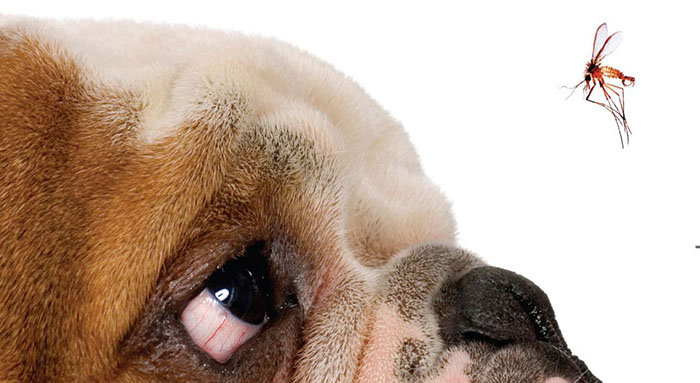One of the most common problems we see every day at our practice is related with our pet´s mouth. Bad breath and red gums may not seem very important to you but this is, in fact, the beginning of what is known as periodontal disease (an irreversible problem that it will cause pain, infection and tooth loss).
What is periodontal disease?
Periodontal disease is the inflammation of some or all of the tooth´s support structures. When compared with gingivitis, periodontitis indicates bone loss.
Food particles and bacteria collect along the gum line forming plaque. If plaque is not removed, minerals in the saliva combine with the plaque and form tartar which adheres strongly to the teeth. Plaque starts to mineralize 3-5 days after it forms. The tartar is irritating to the gums and causes an inflammation called gingivitis. This can be seen as reddening of the gums adjacent to the teeth. It also causes halitosis (bad breath). Endotoxins released by the bacteria cause tissue destruction and bone loss. These bacteria come into the animal´s system when he drinks, eats or even swallows his own saliva.
Microscopic lesions have been found affecting dog´s liver´s, kidneys, and brains in some animals with periodontal disease.
Risk Factors
– Age and general health status: Periodontal disease show more commonly affects older animals.
– Diet and chewing behaviour: dry food is much better than canned food at keeping plaque from accumulating on the teeth. Dogs that chew on various toys or edible dental chews may remove some of the plaque build-up.
– Breed: Small breed and brachycephalic dogs (English or French bulldog, pug, Boston terrier etc.) are at greater risk of periodontal disease because their teeth are often crowded together. This results in an increased accumulation of plaque because the normal cleansing mechanisms are hindered.
– Dogs that groom themselves causing hair to be imbedded in the gingival sulcus: hair accumulation and impaction around the tooth can increase the development of tartar.
– Home Care: Regular bruising of your dog´s teeth can greatly reduce the accumulation of plaque and development of tartar reducing the risk of periodontal disease.
– Immunosuppression due to feline leukaemia virus (FelV) and feline immunodeficiency virus (FIV) can predispose some cats to this disease.
What are the clinical signs?
Dogs and cats may be affected. Many of them have not got any symptoms (especially at the beginning of the disease) but halitosis, oral discomfort, refusal to eat, difficulty when eating, drooling and tooth loss may occur.
As periodontal disease progresses, you may observe the following sigs:
*Pawing at the mouth
*Gums that bleed easily
*Sensitivity around the mouth
*Pus around the tooth
*Persistent bad breath
*Loose or missing teeth
*Stomach or intestinal upsets
*Irritability or depression
What to do next?
Ideally the animal should be examined by a professional to assess the severity of the problem. We will be able to tell you if your pet is going to need a dental treatment, or if the problems are so mild that only with a little bit of oral hygiene and changing of diet/habits this may get better.
In all cases a pre-surgical exam should be conducted. This may, in some cases, include some pre-anaesthetic blood testing. These exams and testing are done to assess the health of your dog and point out any potential problems. Many times your dog will be started on antibiotics few days before the dental procedures and it is likely he will go home on some more antibiotics and painkillers if some extractions have been carried out or if his gums bled profusely during the dental.
Regular brushing of the teeth and/or oral rinsing with a veterinary chlorhexidine solution for the purpose helps to prevent recurrence.
There are also available a wide range of specially formulated foods which reduce the amount of plaque and stain on teeth.
So you know now Prevention is the most important thing to make sure your pet´s teeth are in good health.




